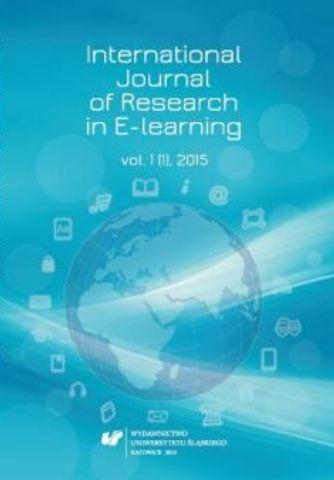Anderson, C. (2015). How to give a killer presentation. Accessed 26 August 2015. Retrieved from https://hbr.org/2013/06/how-to-give-a-killer-presentation/.
Google Scholar
Baron-Polańczyk, E. (2011). Chmura czy silos? Nauczyciele wobec nowych trendów ICT. Zielona Góra: Oficyna Wydawnicza Uniwersytetu Zielonogórskiego.
Google Scholar
Brosch, A., & Frania, M. (2014). The potential of multimedia presentations as the educational tools – Polish examples in higher education. In: J. Kapounová & K. Kostolányová (Eds.), Information and communication technology in education (pp. 28–34). (ICTE-2014). Conference Proceedings, University of Ostrava, Rožnov pod Radhoštěm, 2014. Retrieved from https://konference.osu.cz/ icte/dokumenty/2014/proceedingsICTE2014.pdf.
Google Scholar
Dimitrova, V., Dimitrova, N., & Lustig, F. (2013). ICT in the project-based education of physics. In J. Kapounová & K. Kostolányová (Eds.), Information and communication technology in education (pp. 76–81). Proceedings of the 2013 ICTE Annual Conference. Ostrava: University of Ostrava.
Google Scholar
Effective presentations, a toolkit for engaging an audience. Robert Woods Johnson Foundation. Accessed 26 August 2015. Retrieved from https://www.medicalteams.org/docs/default-source/ resource-center/effective-presentation-toolkit.pdf?sfvrsn=2.
Google Scholar
Faculty (WEiNoE) distance learning platform. Accessed 26 August 2015. Retrieved from http://el.us. edu.pl/weinoe.
Google Scholar
Huk, T. (2011). Media w wychowaniu, dydaktyce oraz zarządzaniu informacją edukacyjną szkoły.
Google Scholar
Miejsce wydania: Oficyna Wydawnicza Impuls.
Google Scholar
Kołodziejczak, B., Roszak, M., Kowalewski, W., & Ren-Kurc, A. (2014). Multimedia educational materials in academic medical training. Studies in Logic, Grammar and Rhetoric Issue on Logical, Statistical and Computer Methods in Medicine 39, no. 1 (52), 105–121.
Google Scholar
Łasiński, G. (1998). Strategia prezentacji w procesie efektywnego komunikowania się. In W. Stry- kowski. Media a edukacja. II Międzynarodowa Konferencja Naukowa. Poznań: Wyd. eMPi2.
Google Scholar
Osmańska-Furmanek, W. (1999). Nowe technologie informacyjne w edukacji. Zielona Góra: Lubuskie Towarzystwo Naukowe.
Google Scholar
Parekh, R. (2006). Principles of multimedia. New York, NY: McGraw–Hill Education.
Google Scholar
Powerful PowerPoint for Educators: Using Visual Basic for Applications to Make PowerPoint Interactive, Second Edition by Marcovitz, David M. (2012) Paperback.
Google Scholar
Rosman, P. (2013). Some aspects of ICT integration into education. In J. Kapounová & K. Kostolányová (Eds.). Information and communication technology in education (pp. 252–260). Proceedings of the 2013 ICTE Annual Conference. Ostrava: University of Ostrava.
Google Scholar
Smyrnova-Trybulska, E. (2003). Podstawy wykorzystania komputera. Sosnowiec: Wydawnictwo Wyższej Szkoły Zarządzania i Marketingu.
Google Scholar
Strykowski, W. (2003). Rola mediów i edukacji medialnej we współczesnym społeczeństwie. Chowanna R. XLVI (LIX), vol. 1 (20), 111–122.
Google Scholar
Toon Goedemé, De, Nayer. Institute Belgium. How to give a good presentation. Accessed 26 August 2015. Retrieved from https://www.ki.fpv.ukf.sk/projekty/kega_3_4029_06/source/ HowToGiveAGoodPresentation.pdf.
Google Scholar


